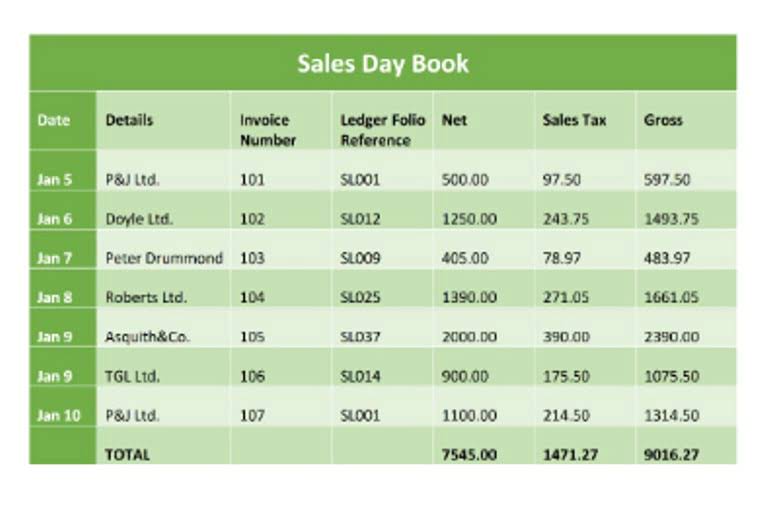What Is Cap Rate in Real Estate?
Лучшие брокеры форекс 2022 Ежеменсячный Специи юга России
22. Juni 2021Three Types Of Enterprise Systems And Their Functionalities
29. Juni 2021![]()
The capitalization rate or cap rate is a profitability metric used in real estate. It is expressed as a percentage and is a function of the income that a property generates and its total market value. In this case, it may be easier to use a cash flow model to estimate the return. We’ve established that cap rate is important, but how do we actually use it? It might seem overwhelming at first glance, but using the cap rate to determine the quality of an investment is actually quite simple.

“There is a greater risk of not getting the return you expect, and perhaps not getting your investment back,” he says. So try to stick within that 4% to 12% cap rate window if you want to play it safe, and when in doubt, be sure to consult your Realtor with any questions. A 7.5 cap rate means that you can expect a 7.5% annual gross income on the value of your property or investment. cap rate defined If your property’s value is $150,000, a 7.5 cap rate will mean a yearly return of $11,250. This relation is because the amount of money you can make investing in government bonds increases, which becomes a more attractive option, increasing the risk of investing in something else. You are most likely to get this type of information from a commercial real estate agent.
What Is a Good Cap Rate?
Therefore, other metrics should be used in conjunction with the capitalization rate to gauge the attractiveness of a real estate opportunity. Internal rate of return (IRR) is used to measure the profitability of a buy-and-hold investment. The IRR is determined by adding the cash flow and expected property appreciation, and dividing by the expected hold period. The resulting number will illustrate how much investors can expect to gain from renting and ultimately selling an investment property. This formula is helpful for painting a better picture of the overall value, though it does rely on estimates.
- Suppose we are looking at a building with a stabilized NOI of $100,000 and in our analysis, we expect that the NOI will increase by 1% annually.
- When calculating the cap rate, we take the ratio of the net operating income to the asset value of the property.
- As the above ratios consider further financial dimensions of the property investment, they are helpful substitutes or complements for the cap rate.
- The capitalization rate, typically just called the cap rate, is the ratio of Net Operating Income (NOI) to property asset value.
- A standard industry practice requires a 50bps spread – that is, the cap rate when selling the property should be 50 basis points lower than the cape rate when the asset was purchased.
In other words, capitalization rate is a return metric that is used to determine the potential return on investment or payback of capital. The cap rate formula also assumes you’re paying cash for the property you’re buying. If you’re considering a mortgage to finance your investment, the cap rate won’t be the best metric to use.
Calculating the Capitalization Rate
The most important thing to remember is that you should never take on more risk than you are comfortable with, and you should always use cap rate in addition to other calculations. Investors should be concerned with a property’s cap rate for a few different reasons. For one, it can help you narrow the field when making real estate investment decisions. If you’re comparing two or three prospective properties, for example, calculating the cap rate can give you a sense of which one has the potential to be the most profitable.

The two primary methods of income capitalization are direct capitalization and yield capitalization. In another version, the figure is computed based on the original capital cost or the acquisition cost of aproperty. Different regions may experience diverse market conditions, creating varied Cap Rates. Keeping an eye on the market is essential for making informed investing decisions. If the property is currently leased, these numbers will be easily available.
Advantages and Disadvantages of Cap Rate
There is no way to fully predict how much a property will sell for in the future, or how much it will appreciate. For this reason, IRR (like many real estate calculations) should be used alongside other formulas when analyzing a deal. Cap rate and gross rent multiplier are both metrics used in real estate investing, but they measure different things. Commercial real estate investments compete with other assets (e.g. stocks and bonds) for investment dollars. If the opportunity cost of capital is too high, investors will use their capital to purchase other assets and the resulting decreased demand will drive prices down and cap rates up. If the inverse is true, cap rates will be driven down by the increased demand stemming from lower opportunity cost of capital.
- Likewise, commercial properties in primary markets tend to have lower cap rates than those in secondary and tertiary markets.
- There are multiple financial ratios that can support the decision-making when you are about to buy or sell a property.
- Some lenders allow early payoffs with no penalties, while other will charge a fee if you pay off the loan before the terms ends.
- The two primary methods of income capitalization are direct capitalization and yield capitalization.
- The capitalization rate indicates the property’s intrinsic, natural, and un-levered rate of return.
As a result, cap rates are no more accurate than stock market predictions; they are subject to an inherent degree of error and should be taken with a grain of salt. I repeat, cap rates are not 100% accurate; they are merely used to estimate one’s potential return on their investment. That said, a properly estimated cap rate is invaluable when supported with due diligence and acute attention to detail. As mentioned before, the cap rate doesn’t account for debt payment in contrast to other debt-related ratios. Because mortgage loans often finance house purchases, a cash-on-cash investment ratio may give you a better guideline. One of the common external aspects that can alter the business environment is a change in interest rates.
About Our Investing Expert
The limitations of an interest rate cap structure can depend on the product that a borrower chooses when entering into a mortgage or loan. If interest rates are rising, the rate will adjust higher, and the borrower might have been better off originally entering into a fixed-rate loan. Lenders have some flexibility in customizing how an interest rate cap might be structured.
A renovation that makes a property more attractive could command higher rents, increasing the owner’s operating income. The rate also indicates the duration of time it will take to recover the invested amount in a property. For instance, a property having a cap rate of 10% will take around 10 years for recovering the investment.
Taking into account risk and how much interest is available on investments in other assets, an investor arrives at a personal rate of return he expects from his money. Capitalization rate (or „cap rate“) is a real estate valuation measure used to compare different real estate investments. Although there are many variations, the cap rate is generally calculated as the ratio between the annual rental income produced by a real estate asset to its current market value. This formula resembles the cap rate calculation, where the property market value is the current stock value, and dividends would match the NOI. It follows that the cap rate will be the real estate investor’s required rate of return minus the expected growth rate.
